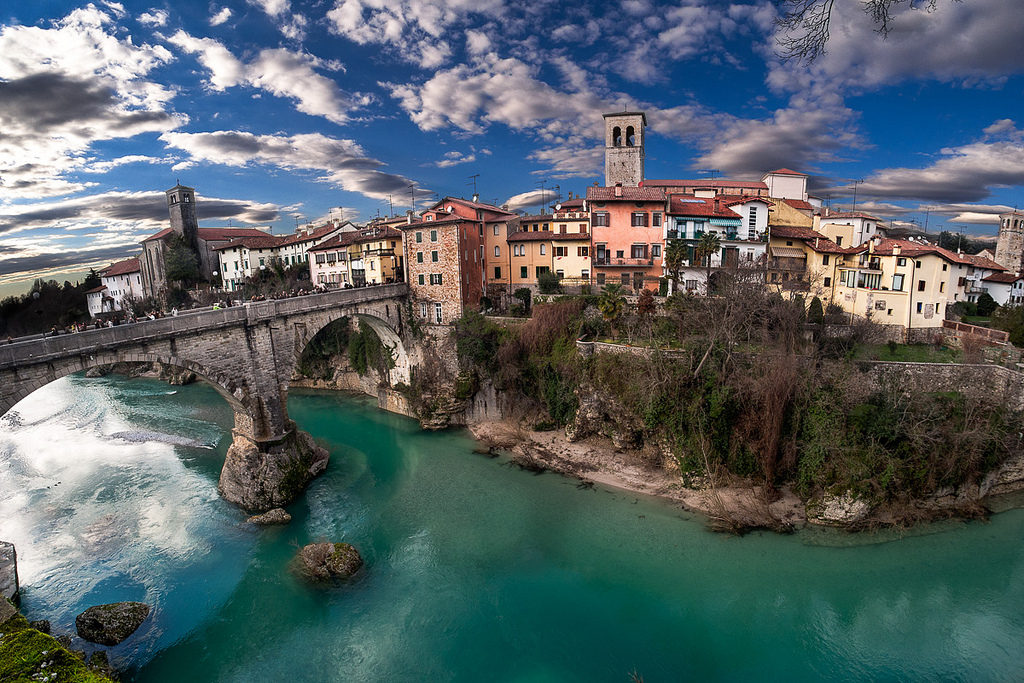A question most frequently asked of us – “what’s your favorite wine?” is followed by the unconditional response – “what’s in our glass at this very moment”. Since we are equal opportunity drinkers and eaters, assuming the wine is sound in structure, we enjoy every single sip of wine that finds its way in our glass regardless of price, score, country, and color.
And today we find ourselves back in our spiritual motherland – Italy, specifically Friuli, tasting varietals which would be extinct, if it was not for a handful of passionate mavericks growing grapes illegally in their back yards.
Wrap your head around Italy’s 461 official grape varieties, of which 377 are genetically different Native grapes. So basically you could explore a new variety 365 days of the year yet fall short, let alone combining the endless permutations of producers, terroir, and stylistic difference.
Exploring this dizzying array of diversity and heritage seems like a herculean task, (even to us professionals). Adding fuel is the Italian quandary – is it a place or a grape? Pronounce that name again, huh?
That said, there is a method to their madness. Generally speaking, Italian grapes nomenclature can be sub-categorized into:
Sensory Attributes: Color – Verdicchio comes from verde – green in Italian. Refosco dal Peduncolo Rosso is derived from Refoscos red stalk. Smell – Mammola exudes violet aromas. Taste – Dolcetto derived from dolce – sweet as in the sweet taste of the grape (not sweet wine). Tazzelenghe from tace-lenghe which translates from the local dialect as “cuts your tongue” referring to its laser sharp acidity.
Berry Shape & Size: Pignolo from pigna – pine cone. Olivella from olive shaped berries.
Viticulture & Wine Characteristics: One has to applaud Italian humor, even in troubled times, they manage to appreciate life and its bounties. Carricante earned its name for its copious production. And then there is Pulincolo which translates to “fleas up your rear end” alluding to the cultivar’s peppery zing.
Perceived Origin: Malvasia from the ancient Greek city Monevasia.
Important Names: Santa Maria etc.
Regardless of its name or origin, we find Italian wines to be downright delicious, savory, structured, appetite-stimulants that dazzle with a dining plate in hand.
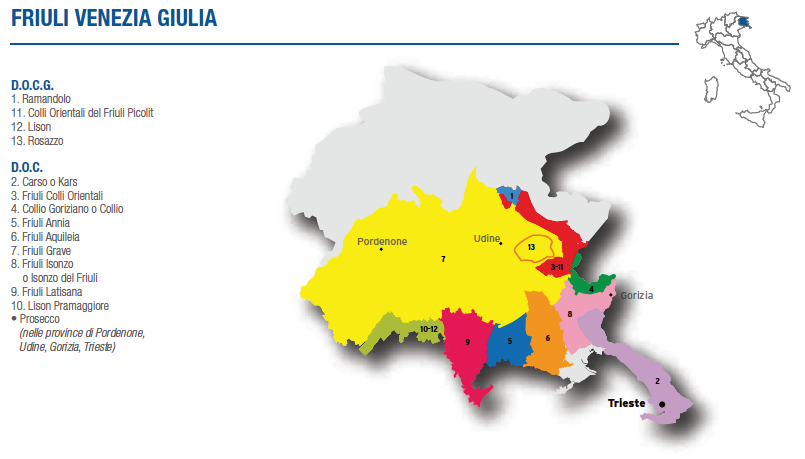
Crossroads of cultures juxtaposed between regal Austria to the north, snow-capped Slovenia on its east, Adriatic sea to the south, and vine-centric Veneto out west, Friuli is not only a terrific travel destination, it’s a wine region like no other in Italy. A wine region with a breathtaking range of varietals, 20 to be precise, all paying homage to the grape’s true expression.
Shall we taste?
Refosco dal Peduncolo Rosso
One sip is all it takes to emerge from confusion to clarity with the Refosco Group (a set of 4 grapes that are genetically distinct). A notable native of Friuli since the seventeenth century, it’s noble lineage extends to – Corvina (Amarone) parent and Rondinella’s grandparent via natural crossing of Teraldego, Lagerin, & Marzemino (trentino cultivars).
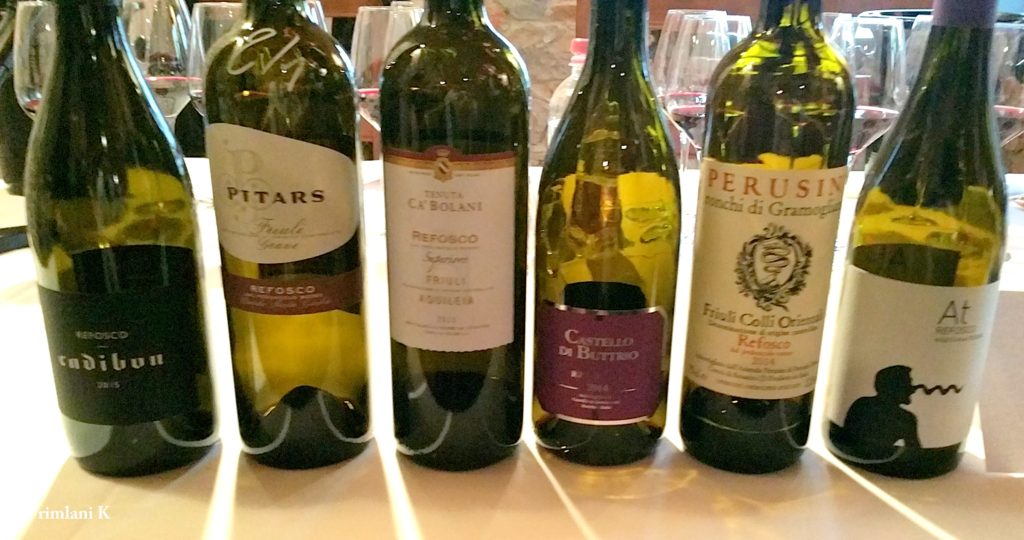
The leading star of the Refosco group, Refosco dal Peduncolo Rosso exudes beautifully ripe blue and black fruits with softly-scented floral notes of violet and lavender. It’s dry, medium weight, and approach-ability makes it an ideal contender as our everyday dinner wine that shines with a comforting bowl of chili or pork stew.
If you can get your hands on these limited edition wines, ask for these notable producers by name: Cadibon, Pitars, Tenuta Ca’ Bolani, Castello di Buttrio, Perusini, Aquila del Torre, Buiatti Livio & Claudio, Butussi Valentino, Ca’ tullio, Vitas 1907, Cantina di Bertiolo, Pizzuin Denis, Valchiaro, Le Monde, Marco Cecchini, Petrucco, and Valpanera.
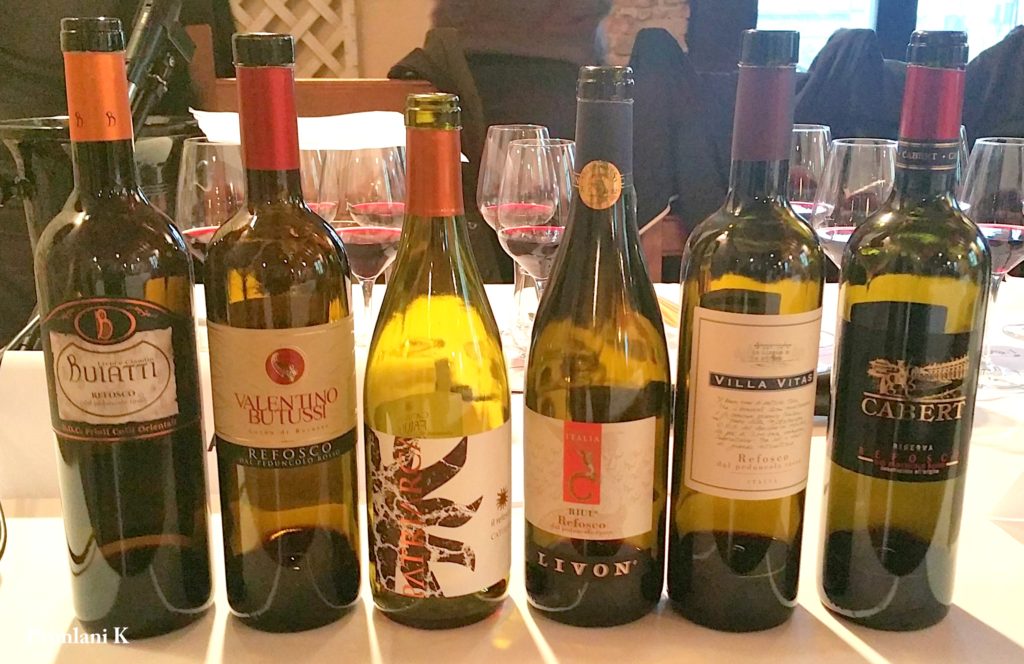
Refosco di Faedis
Officially registered as Refosco Nostrano, in efforts to revive, revitalize, and reclaim Refosco de Faedis’s fame, producers have boldly created a collision called Association Volantario Viticoltori Refosco di Faedis. Which involve specific guidelines to demonstrate the high quality and originality of Refosco di Faedis, including a production of reserva wines – conforming to 2 years of aging including 18 months spend in large oak casks. If rest of the wine world, shared their wine convictions, the world would undoubtedly be a tastier place. Sporting a black label with a golden eagle emblem, roughly 30 producers are committed to this mouth-watering movement. Bravo!!
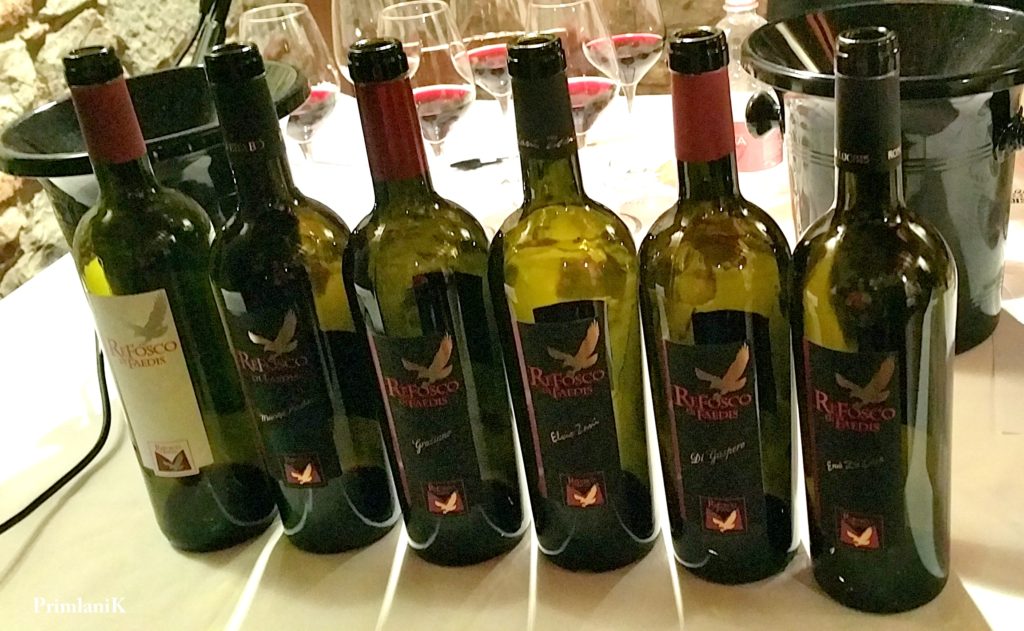
When I think of Refosco de Faedis, I envision deep ruby hues, sweet spiced notes of cinnamon and cardamom, held together with lively acidity and graceful tannins.
Notable producers: Macor Gianni, Graziano Mosolo, Perabo Maurizio, Ronc dai Luchis, Di Gaspero Flavia e Umberto, Zani Elvio.
Schioppettino
Also called Sclopetin (Friuli), Pocalza (Slovenia), and Ribolla Nera (Italy), Schiopettino’s history is as scintillating as its sensory profile. Abundant in the 13th century, outlawed in 1976, and rescued from extinction in an emergency town council meeting in 1977. Schioppettino’s savior was the Rapuzzi family, who located and tended to 70 abandoned vines of Schioppettino in 1970 thus resuscitating Schiopettino’s rightful place back in Italy’s viticulture. With Luigi Veronelli’s support (a champion of Italy’s enological and gastronomic heritage), Schioppettino earned its first DOC In 1989 as Colli Orientali del Friuli.
Today Schioppettino’s calling card green peppercorn, is held together with juicy fruit, bright acidity, and alcohol levels rarely exceeding 12.5%. In an enological euphorically world, If Pinot Nero and Syrah had a love child – it would be named Schioppettino.
Food Pairings – think finger-licking barbecue, fresh pasta rocking ragu, and succulent medium-rare steak.
Notable producers: Ronchi San Giuseppe, Conte D’Attimis Maniago, La tunella, Centa S. Anna, Flaibani, Gigante.
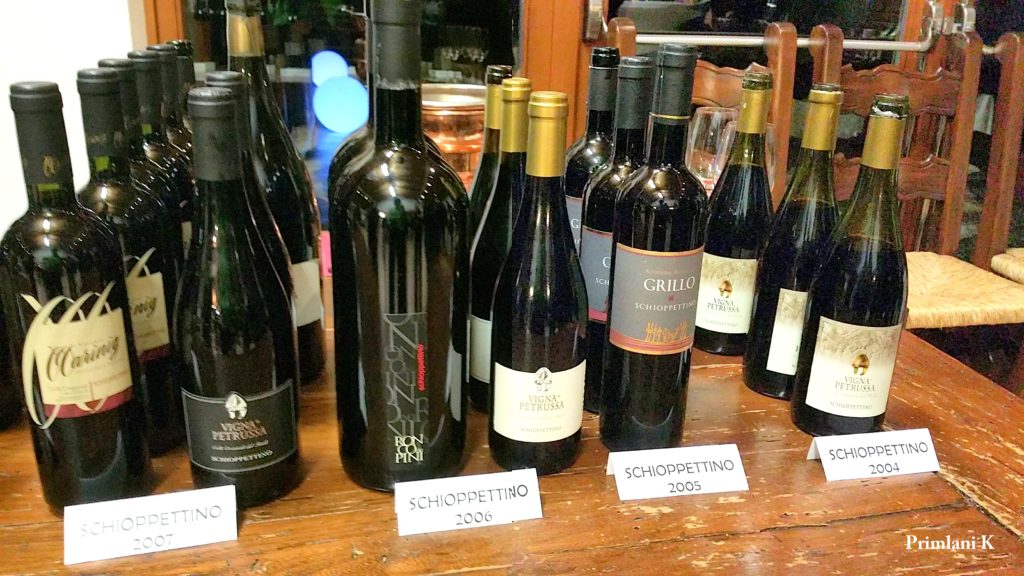
Schioppettino di Prepotto
Schioppettino’s spiritual home – Prepotto showcases alluring wild red berries, seductive spiciness, laced together with mouth-watering acidity, medium body, and soft tannins.
Cultivated almost exclusively in the grand cru hills of Prepotto, Albana, & Cialla, 26+ Producers are committed to Producing world class quality and varietally correct character of Schiopettino by adhering to strict productions guidelines. The Rapuzzi family not only succeeded in establishing a DOC for Schiopppettino di Prepotto, their vineyard in Cialla received a “cru” designation in 1990s.
For a memorable meal, partner it with grilled meats including wild game.
Notable producers: Ronchi di Cialla, Colli di Poinais, Grillo Iole, Vigna Lenuzza, La Buse Dal Lof, Marinig, Ronco dei Pini.
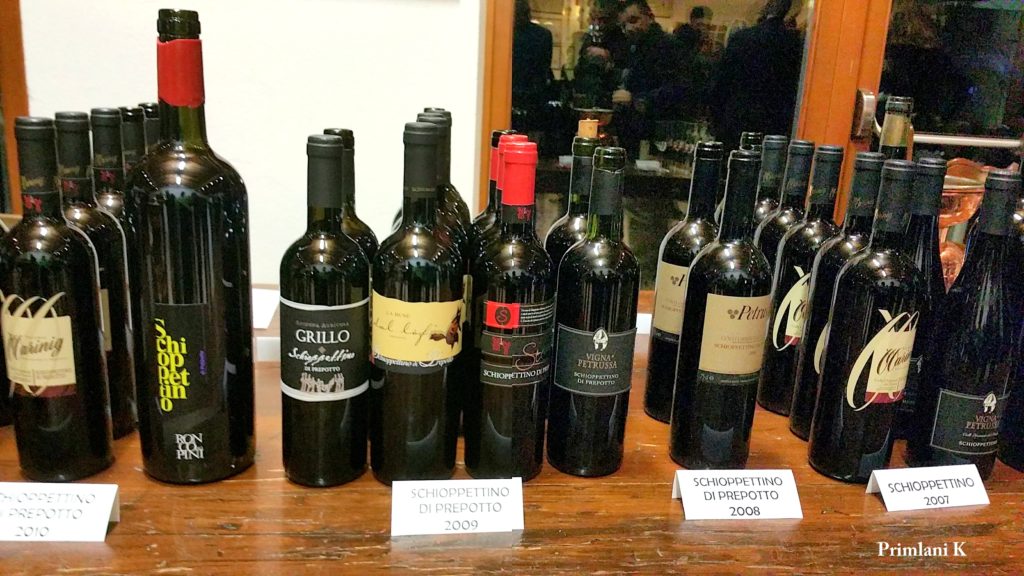
Tazzelenghe
One sip tells the story of Tazzelenghe in the local Friulian dialect “tacelenghe” – “cuts the tongue” Thanks to the 6 passionate producers, dedicated to producing high quality Tazzelenghe, we savored red fruit-driven, light framed wines with refreshing acidity and fine tannins. A wallet-friendly contender for turkey day and Easter perhaps?
Along with Pignolo and Schioppettino, this vine variety was saved from extinction thanks to the 1978 EEC regulation authorizing these indigenous grapes for cultivation in the province of Udine.
Notable producers: Colutta Gianpaolo, Jacuss, La Viarte.
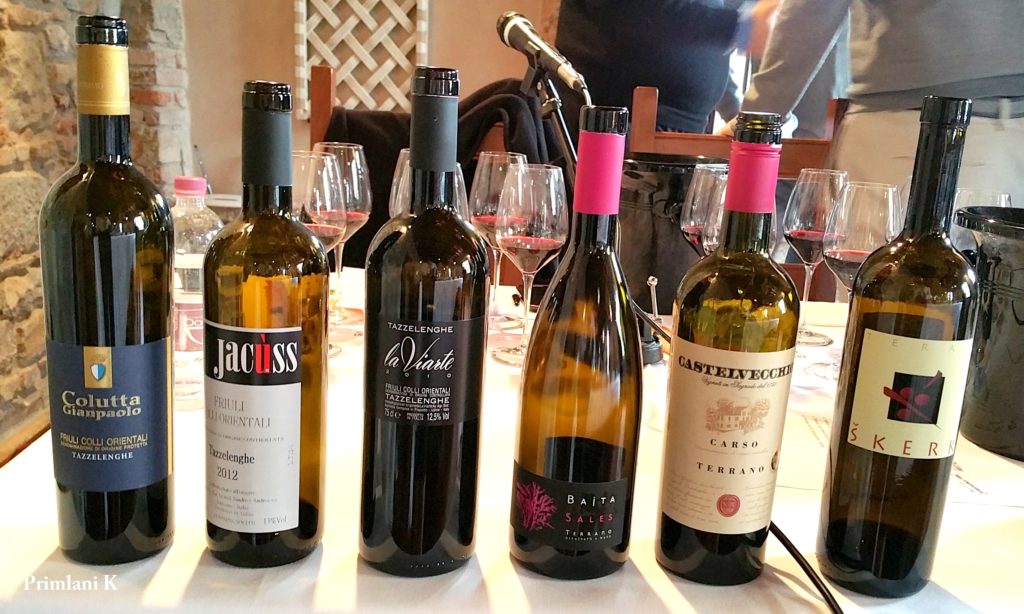
Terrano
Rich in iron, minerals, antioxidants, Terrano also known as “Blood of Carso” was a popular choice of drink for young women to keep anemia at bay. Genetically identical to Refosco d’ Istria and Slovenian Refosk, Terrano grows almost exclusively on the iron-rich red soils of Carso in Italy and it’s bordering Slovenia.
Exuding wild berries, savory nuances, spiked with white pepper and Indian spices, bound with balanced alcohol, tannins, and lively acidity, we were craving chunks of succulent lamb kebabs and nutty hard cheeses.
Producers: Bajta, Castelvecchio, Skerk.
Pignolo:
Historically a blending partner, if it was not for visionaries Casasola, vineyard worker at the monastery Abazzia di Rosazzo, Silvia Zamo owner of Le Vigne di Zamo Estate, and winemaker Walter Filiputti, Pignolo might have very well been erased from our universe.
Named for its compact pine-cone shaped bunch, Pignolo’s power and promising future lies in its thick tannins. Rich in texture and alcohol, new-world wine fashionistas and patrons of Zinfandels, Sagrantinos, and Barolos should consider Pignolo their new partner in crime.
What to pair with Pignolo’s juicy blue and black fruit, shimmering sweet spices, and robust tannins – a perfectly charred rib-eye steak of course.
Notable producers: Borgo and Danielle, Rocca Bernarda, Scarbolo, Specogna, Giovanni Il Roncat, Livio Felluga.
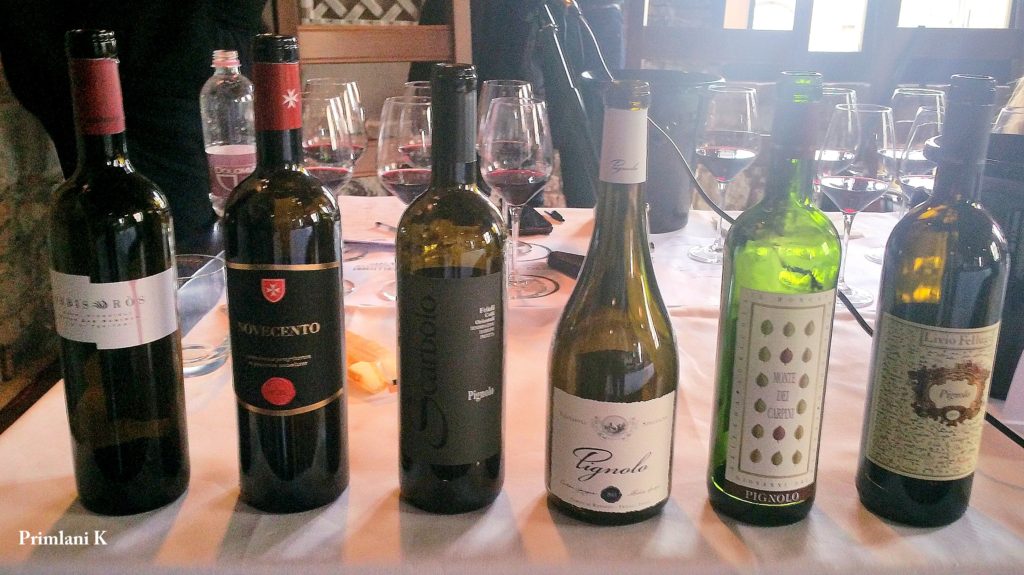
In a world where we embrace and revere regionality, ethnicity, and local cuisine, shouldn’t family-owned outfits, producing world-class wines, swaggering their own signature soul, and mind you at unbelievable low prices merit the same attention and respect of connoisseurs?
Beautifully balanced boasting striking personalities, move over ubiquitous cabernets and merlots, here are the new kids on the block from some of the lowest yielding rarest natives in the world, and they are here to stay.
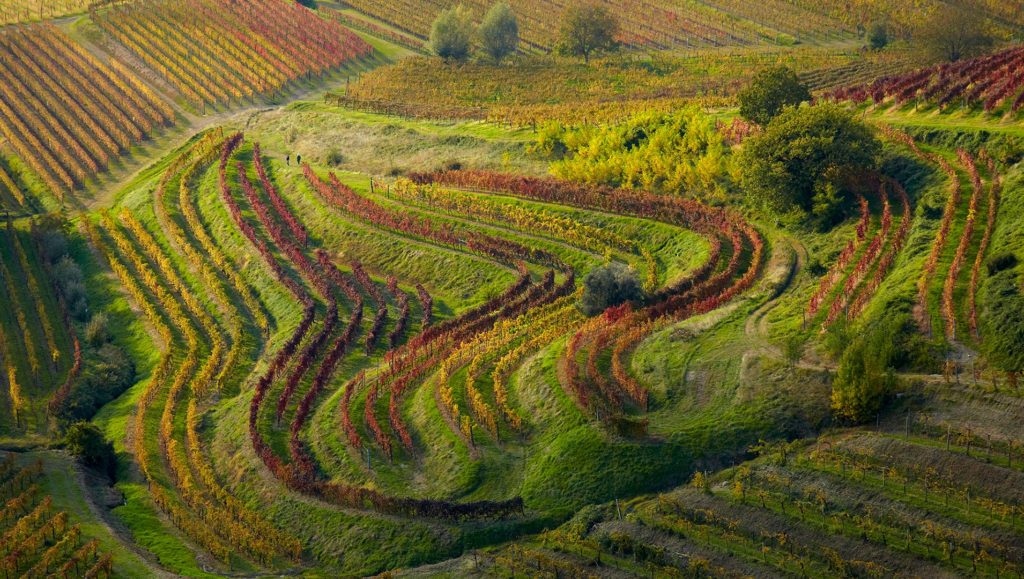
Grazie mille Dr. Ian D’Agata, ERSA – FVG, Consorzio DOC FVG, Collisioni Progetto Vino, & FVG turismo for this incredible, eye-opening experience.
Until next time, have a delicious day!!
